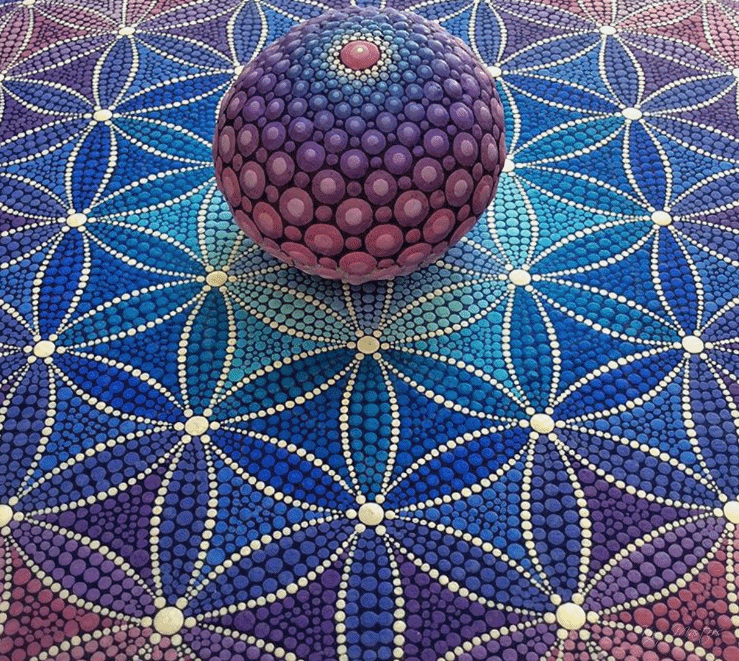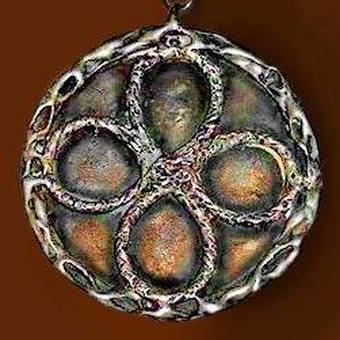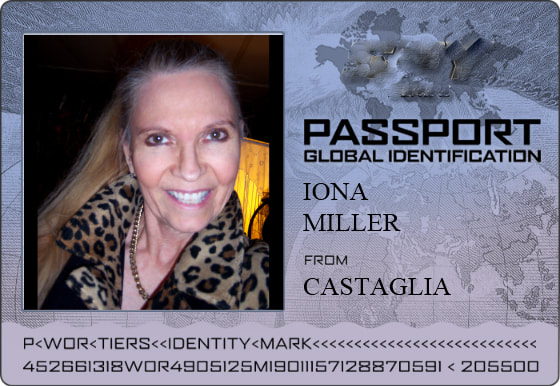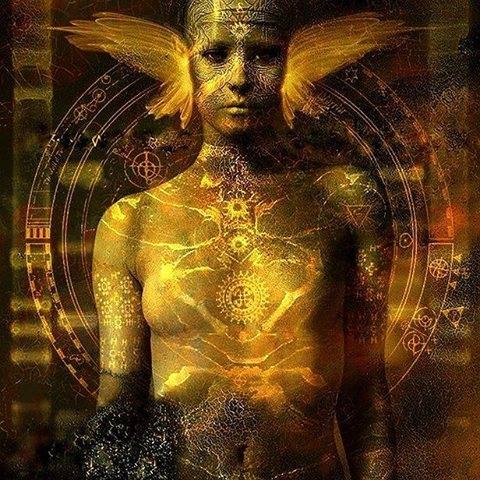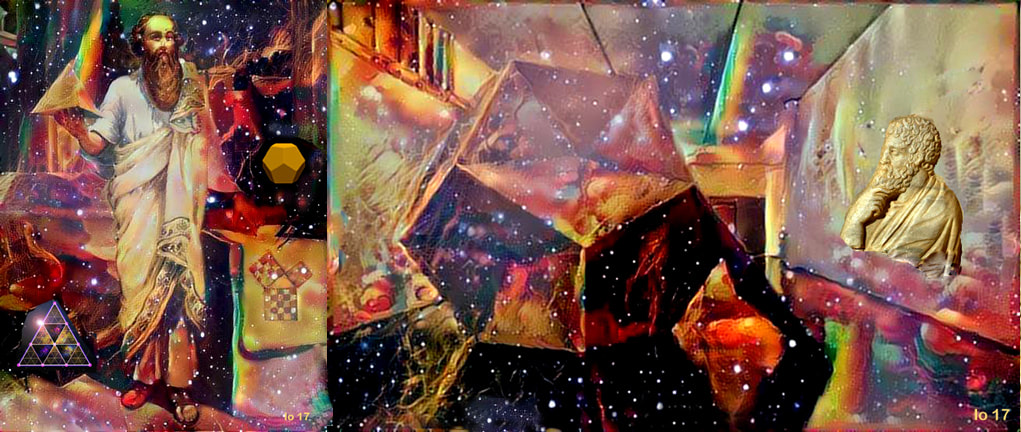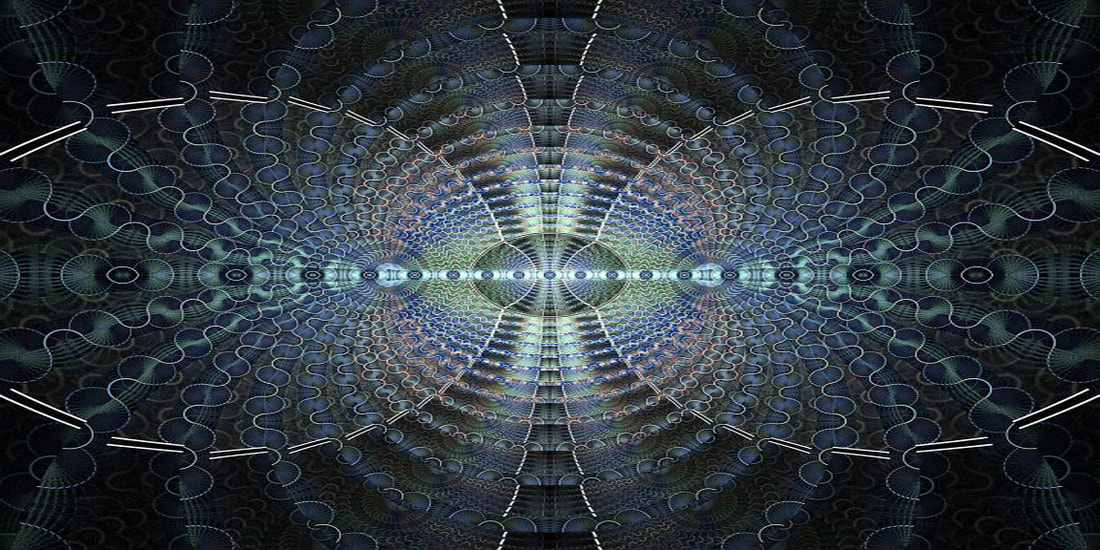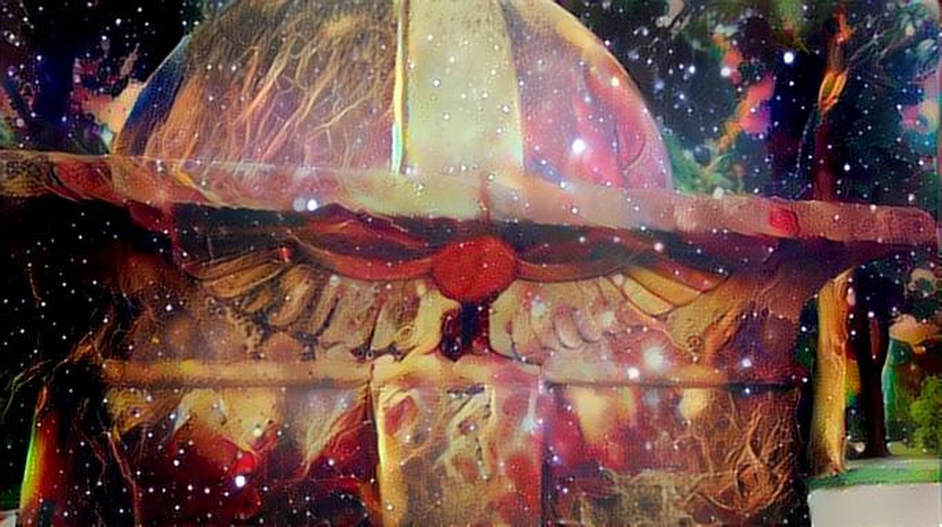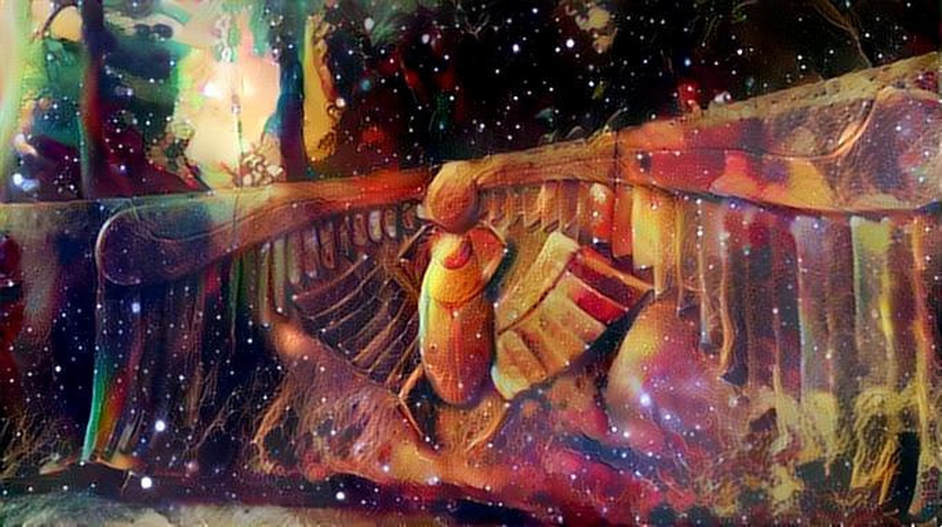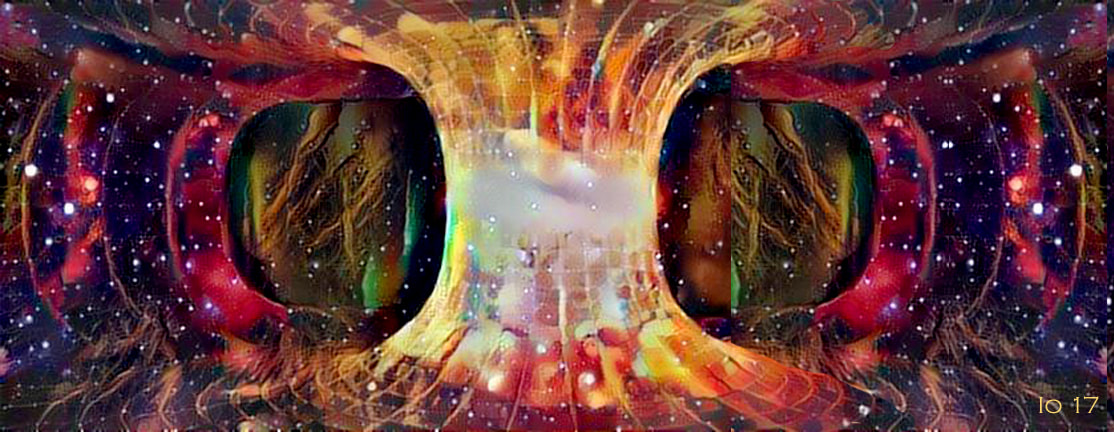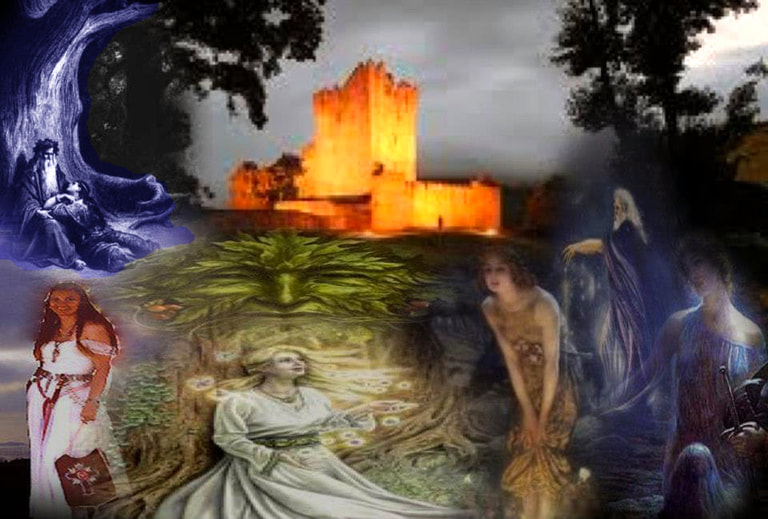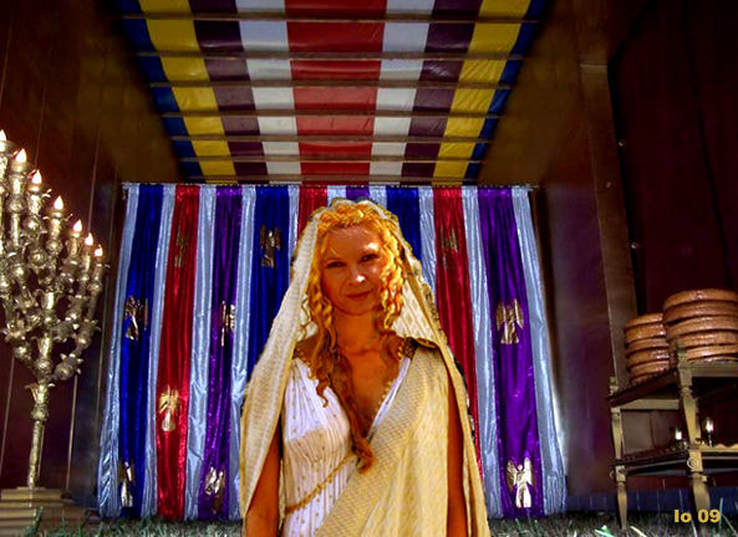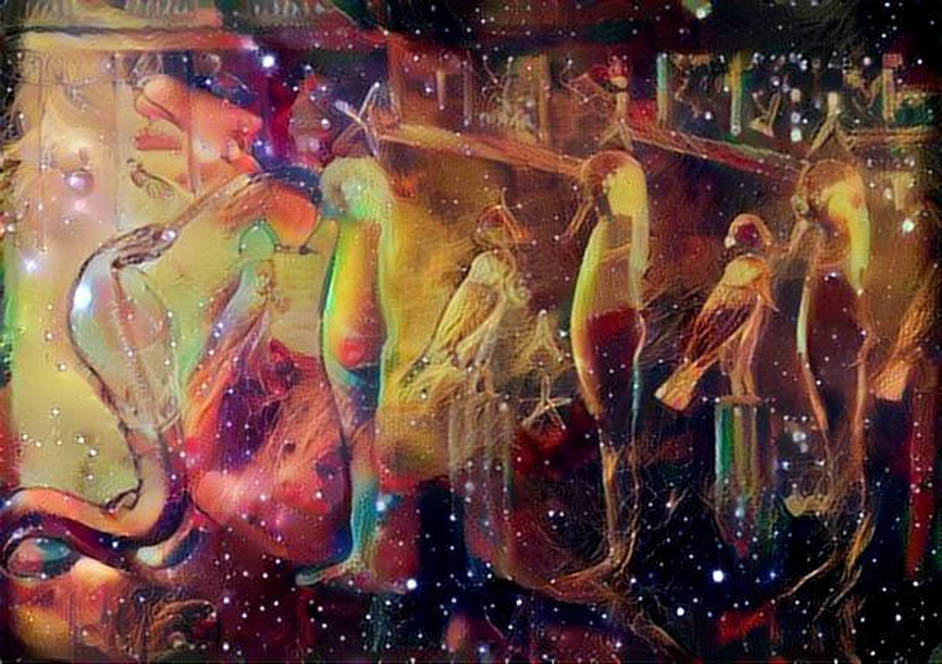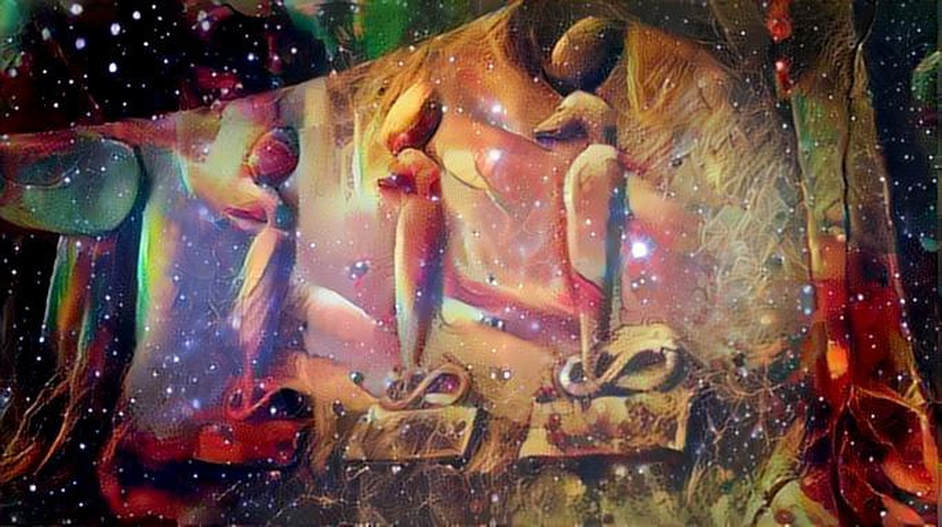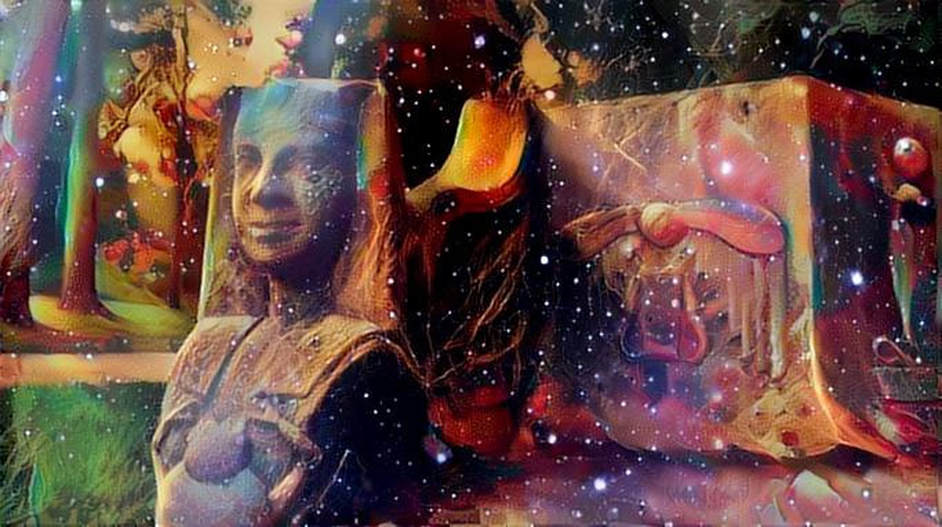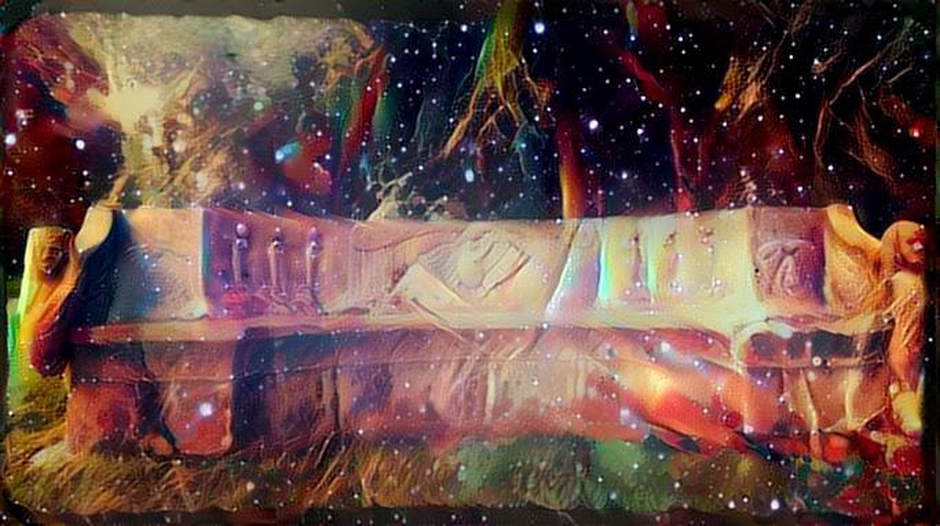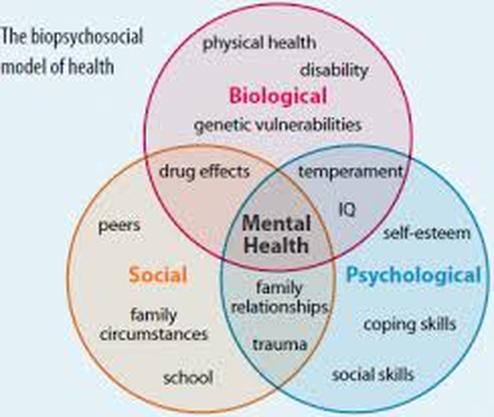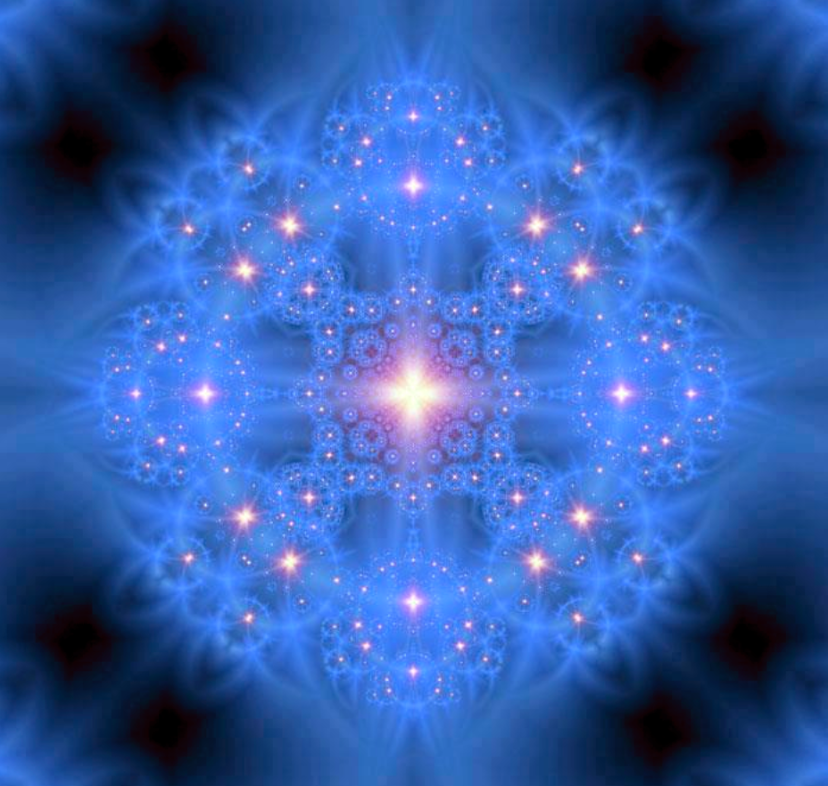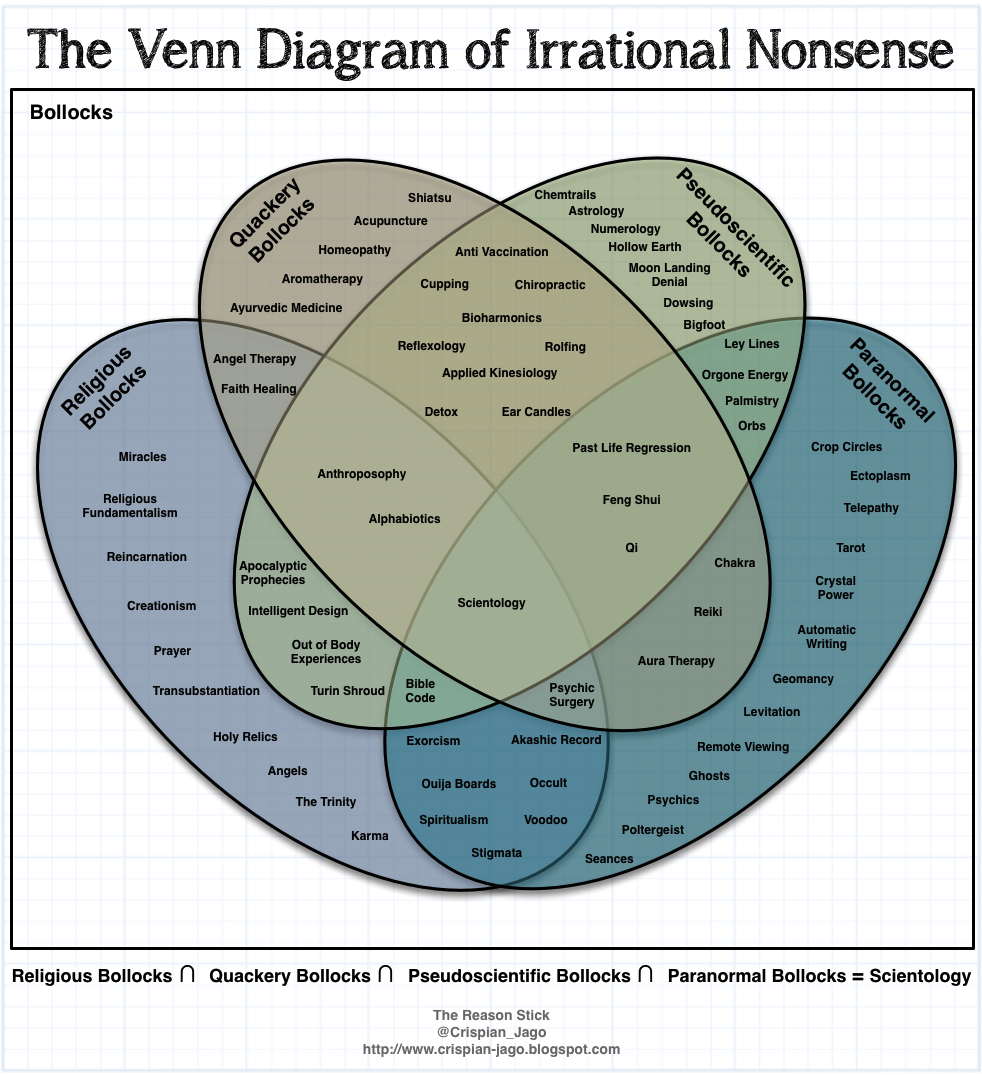…one can speak about music only with a man
who has perceived the meaning of the cosmos.
--Herman Hesse, The Glass Bead Game
who has perceived the meaning of the cosmos.
--Herman Hesse, The Glass Bead Game
League of Spiritual Discovery Medallion, Millbrook
′′ What you call passion is not psychic energy, but friction between the soul and the outside world. Where passion is dominant, there is no more desire and aspiration, but it is directed to a false and isolated destination, hence the tension and heaviness of the atmosphere. Who directs the supreme energy of desire towards the center, towards the real being, [...] seems calmer than the enthusiast because you always see the flame of his ardor, because for example in disputing he doesn't scream and doesn't shake his arms. But I say to you: he must burn and burn! ′′
--Herman Hesse, The Glass Bead Game
′′ What you call passion is not psychic energy, but friction between the soul and the outside world. Where passion is dominant, there is no more desire and aspiration, but it is directed to a false and isolated destination, hence the tension and heaviness of the atmosphere. Who directs the supreme energy of desire towards the center, towards the real being, [...] seems calmer than the enthusiast because you always see the flame of his ardor, because for example in disputing he doesn't scream and doesn't shake his arms. But I say to you: he must burn and burn! ′′
--Herman Hesse, The Glass Bead Game
the bead game
Overview
"It was the best of times, it was the worst of times, it was the age of wisdom, it was the age of foolishness, it was the epoch of belief, it was the epoch of incredulity, it was the season of Light, it was the season of Darkness, it was the spring of hope, it was the winter of despair, we had everything before us, we had nothing before us, we were all going direct to Heaven, we were all going direct the other way—in short, the period was so far like the present period, that some of its noisiest authorities insist on its being received, for good or for evil, in the superlative degree of comparison only." --Dickens, Tale of Two Cities
From ancient history there has been an ideal of means of human inquiry and analysis -- to unwrap further the significance of phenomena and relations described. The Bead Game is certainly not the only possible perspective, but is a central one, like modern mathematical notation. Data processing grew ever more different from the way humans naturally think -- and ever more important.
"A person who wishes to influence the decisions of governments, organizations and companies must therefore learn to speak in numbers. Experts do their best to translate even ideas such as 'poverty', 'happiness' and 'honesty' into numbers ('the poverty line', 'subjective well-being levels', 'credit rating'). Entire fields of knowledge, such as physics and engineering, have already lost almost all touch with the spoken human language, and are maintained solely by mathematical script.
"More recently, mathematical script has given rise to an even more revolutionary writing system, a computerised binary script consisting of only two signs: 0 and 1. The words I am now typing on my keyboard are written within my computer by different combinations of 0 and 1.
"Writing was born as the maidservant of human consciousness, but is increasingly becoming its master. Our computers have trouble understanding how Homo sapiens talks, feels and dreams.
So we are teaching Homo sapiens to talk, feel and dream in the language of numbers, which can be understood by computers. And this is not the end of the story. The field of artificial intelligence is seeking to create a new kind of intelligence based solely on the binary script of computers." https://delanceyplace.com/view-archives.php?p=3392
Math is the World's Dominant Language
All data is freely associated in the brain. "The dominant languages of the world today are those of bureaucracy, machines and mathematics, and they have gradually changed the way humans think and view the world:"
The Glass Bead Game or Magister Ludi (set in the 23rd Century) describes a cadre of individuals and their headmaster -- the Magister Ludi -- engrossed in interdisciplinary play engineering cultural values from behind the scenes. Hesse never forthrightly explained just how the game is played, but gave many hints to its structure for future aspirants seeking solutions to the critical predicament of mankind through Global Architectronics.
The Glass Bead Game requires that its players synthesize aesthetics and philosophy. The Glass Bead Game is thus a mode of playing with the total contents and values of our culture. It plays with them as, say, in the great age of the arts a painter might have played with the colors on his palette. The Game's synthetic, non-linear information play is a forerunner of postmodernism, virtual reality, and now Critical Reality.
After each symbol conjured up by the director of a Game, each player was required to perform silent, formal meditation on the content, origin, and meaning of this symbol, to call to mind intensively and organically its full purport. The members of the Order and of the Game associations brought the technique and practice of contemplation with them from their elite schools, where the art of contemplation and meditation was nurtured with the greatest care.
The variety of the phenomenal world reached perfection and ultimate cognition only in the divine Unity. Thus, "realizing" was a favorite expression among the players. They considered their Games a path from Becoming to Being, from potentiality to reality...For the small circle of genuine Glass Bead Game players the Game was virtually equivalent to worship.
The Glass Bead Game is a commentary on how we construct our realities. It requires that its players synthesize aesthetics and philosophy, making deep connections from seemingly unrelated topics. Mystic game players use interdisciplinary symbols to manipulate multi-level metaphors. In the end, the Magister Ludi realizes the futility of the game, and leaves it. He deprograms himself from his former goal.
It illustrates the ways that people position not just themselves but how they construct, deconstruct, signify, encode and program their entire perception of reality. One needs to understand reality before one can deliberately allocate it. It takes years of study to acquire the comprehensive backgrounds in the arts and sciences.
The Glass Bead Game is thus a mode of playing with the total contents and values of our culture; it plays with them as, say, in the great age of the arts a painter might have played with the colors on his palette. The Game's synthetic, non-linear information play is a forerunner of virtual reality.
“Theoretically,” writes the Narrator Archivist, “this instrument is capable of producing in the Game the entire intellectual content of the universe. The manuals, pedal, and stops are now fixed. Changes in their number and order and attempts at perfecting them, are actually no longer feasible except in theory.” And with this statement, he reveals the limitations of the game: its elitism, its hubris, its stagnation, and its sterility. In its infancy, the Game was played with delicate glass beads, which have since been discarded as too . . . real?
They connected the Game with the spiritual beads played by religious believers worldwide, as the robes, and secret language, and ceremonial trappings of the game form a mock religious experience in the time of the Narrator Archivist. Without them, the game flies into the ether without a tether to reality. In our world, prayer beads and the repetition of simple phrases serve as keys to transcendence.
"It was the best of times, it was the worst of times, it was the age of wisdom, it was the age of foolishness, it was the epoch of belief, it was the epoch of incredulity, it was the season of Light, it was the season of Darkness, it was the spring of hope, it was the winter of despair, we had everything before us, we had nothing before us, we were all going direct to Heaven, we were all going direct the other way—in short, the period was so far like the present period, that some of its noisiest authorities insist on its being received, for good or for evil, in the superlative degree of comparison only." --Dickens, Tale of Two Cities
From ancient history there has been an ideal of means of human inquiry and analysis -- to unwrap further the significance of phenomena and relations described. The Bead Game is certainly not the only possible perspective, but is a central one, like modern mathematical notation. Data processing grew ever more different from the way humans naturally think -- and ever more important.
"A person who wishes to influence the decisions of governments, organizations and companies must therefore learn to speak in numbers. Experts do their best to translate even ideas such as 'poverty', 'happiness' and 'honesty' into numbers ('the poverty line', 'subjective well-being levels', 'credit rating'). Entire fields of knowledge, such as physics and engineering, have already lost almost all touch with the spoken human language, and are maintained solely by mathematical script.
"More recently, mathematical script has given rise to an even more revolutionary writing system, a computerised binary script consisting of only two signs: 0 and 1. The words I am now typing on my keyboard are written within my computer by different combinations of 0 and 1.
"Writing was born as the maidservant of human consciousness, but is increasingly becoming its master. Our computers have trouble understanding how Homo sapiens talks, feels and dreams.
So we are teaching Homo sapiens to talk, feel and dream in the language of numbers, which can be understood by computers. And this is not the end of the story. The field of artificial intelligence is seeking to create a new kind of intelligence based solely on the binary script of computers." https://delanceyplace.com/view-archives.php?p=3392
Math is the World's Dominant Language
All data is freely associated in the brain. "The dominant languages of the world today are those of bureaucracy, machines and mathematics, and they have gradually changed the way humans think and view the world:"
The Glass Bead Game or Magister Ludi (set in the 23rd Century) describes a cadre of individuals and their headmaster -- the Magister Ludi -- engrossed in interdisciplinary play engineering cultural values from behind the scenes. Hesse never forthrightly explained just how the game is played, but gave many hints to its structure for future aspirants seeking solutions to the critical predicament of mankind through Global Architectronics.
The Glass Bead Game requires that its players synthesize aesthetics and philosophy. The Glass Bead Game is thus a mode of playing with the total contents and values of our culture. It plays with them as, say, in the great age of the arts a painter might have played with the colors on his palette. The Game's synthetic, non-linear information play is a forerunner of postmodernism, virtual reality, and now Critical Reality.
After each symbol conjured up by the director of a Game, each player was required to perform silent, formal meditation on the content, origin, and meaning of this symbol, to call to mind intensively and organically its full purport. The members of the Order and of the Game associations brought the technique and practice of contemplation with them from their elite schools, where the art of contemplation and meditation was nurtured with the greatest care.
The variety of the phenomenal world reached perfection and ultimate cognition only in the divine Unity. Thus, "realizing" was a favorite expression among the players. They considered their Games a path from Becoming to Being, from potentiality to reality...For the small circle of genuine Glass Bead Game players the Game was virtually equivalent to worship.
The Glass Bead Game is a commentary on how we construct our realities. It requires that its players synthesize aesthetics and philosophy, making deep connections from seemingly unrelated topics. Mystic game players use interdisciplinary symbols to manipulate multi-level metaphors. In the end, the Magister Ludi realizes the futility of the game, and leaves it. He deprograms himself from his former goal.
It illustrates the ways that people position not just themselves but how they construct, deconstruct, signify, encode and program their entire perception of reality. One needs to understand reality before one can deliberately allocate it. It takes years of study to acquire the comprehensive backgrounds in the arts and sciences.
The Glass Bead Game is thus a mode of playing with the total contents and values of our culture; it plays with them as, say, in the great age of the arts a painter might have played with the colors on his palette. The Game's synthetic, non-linear information play is a forerunner of virtual reality.
“Theoretically,” writes the Narrator Archivist, “this instrument is capable of producing in the Game the entire intellectual content of the universe. The manuals, pedal, and stops are now fixed. Changes in their number and order and attempts at perfecting them, are actually no longer feasible except in theory.” And with this statement, he reveals the limitations of the game: its elitism, its hubris, its stagnation, and its sterility. In its infancy, the Game was played with delicate glass beads, which have since been discarded as too . . . real?
They connected the Game with the spiritual beads played by religious believers worldwide, as the robes, and secret language, and ceremonial trappings of the game form a mock religious experience in the time of the Narrator Archivist. Without them, the game flies into the ether without a tether to reality. In our world, prayer beads and the repetition of simple phrases serve as keys to transcendence.
CULTURAL ENGINEERING; GLOBAL ARCHITECTRONICS
“The interaction of our mind and consciousness with the quantum vacuum links us with other minds around us, as well as with the biosphere of the planet. It "opens" our mind to society, nature, and the universe. This openness has been known to mystics and sensitives, prophets and meta-physicians through the ages. But it has been denied by modern scientists and by those who took modern science to be the only way of comprehending reality.” -Ervin Laszlo
New physics, chaos theory, synergetics, and information theory describe our existence as complex dynamical systems. Entropy can only occur in a system that is absolutely closed so no energy from outside can be fed into it. But the mindbody is an open system, which exchanges energy and information with its environment and can be negentropic.
We can also have a negentropic influence on one another (Gladwell), perturbing, enlarging, creating new pathways and possibilities. Theoretically, behavior can ripple outward until a critical mass or "tipping point" is reached, changing the world. Gladwell's thesis that ideas, products, messages and behaviors "spread just like viruses do" remains a metaphor. Yet, highly sociable or connective people often become revolutionary leaders, bringing others together with a new perspective, a broadened worldview.
Life includes chaos and order, good and bad experiences, even catastrophes that require us to adapt or die. The important thing is how we meet and react to chaos, finding ways to replenish our depletion. Observation of the subquantal domain reveals an inexhaustible realm of negentropy from which we can draw our psychophysical sustenance. When healthy, our entire system is designed to reduce entropy, in different scales and domains.
We live in a persistent delusion of separateness. However, we are all nonlocally connected in an ill-defined yet tangible way at the subatomic, individual, group and global level, connecting and diverging. Psychic energy or libido is a psychosomatic phenomenon analogous to the paradoxical nature of energy/matter or wave/particle. The human body is not an object in space, but seamlessly welded to spacetime. We are not merely a phenomenal body of flesh, but one of awareness, of consciousness, a living interface of inner and outer field phenomena.
We all experience visceral or gut reactions and know instinctively how our mental states affect our physical vitality, and vice versa. But often we loose the intimate relationship with our mindbody, with the source of our being, our aliveness, our passions, our self-expression and self-image. If we experience this flow at all, it ebbs and flows away. Our individual and collective creative potential remains largely unrealized.
How often do we pay attention to those vital signs, the innate wisdom of the body, inhabiting our minds rather than our flesh? We are increasingly not instinctual, but cultural, and we choose many of our behaviors for good or ill. Most of us are, indeed, "sick and tired" of the way things are, but what do we do to change them and ourselves?
We can learn simple techniques for self-care and self-regulation, such as biofeedback, yoga, and meditation. Creativity, as an activity in several fields, brings many intrinsic health-promoting rewards. We can create new habits to help us cope with technocratic society that tone or recalibrate our systems and change our physical state. We all have to learn how to deal with personal and/or global catastrophe whether we want to or not.
This dance is a harmonic continuum from the smallest to the largest scales, permeating all domains of assembly and observation: subquantum, quantum, molecular, chemical, even cultural, global, and cosmological. The evolution of our dynamic system obeys universal laws. Likewise our behaviors flow into manifestation from our beliefs, thoughts and emotions, including our self-image.
By opening to system dynamics we can reorganize away from the entropic, reductionistic, destructive habit patterns that plague our species. We can make stress-reducing negentropic choices for structural and psychological adjustment, which improve our quality of life. Integration is a synergistic process rooted in primordial bodymind consciousness.
The brain is not confined to our skull, but permeates our whole being through the intracellular matrix and sensory system, as well as the strong EM fields generated by the beating heart. Research suggests activities in the brain may be pre-conditioned by the DC field of the organism (Oschmann; Becker). Our molecular system extends beyond the nervous system and is the bedrock of intuitive, subconscious and unconscious processes.
SOMA SOPHIA: Body Wisdom and Golden Flesh
"The borders of our minds are ever shifting and many minds can flow into one another ... and create or reveal a single mind, a single energy" ~ William Butler Yeats
Do we actively value our psychic well being, our totality, psyche and substance? Are we living soulful, artful lives? Do we nourish our whole selves with self-love? Do we take the time to care for our body or deny it, drive it relentlessly like our servant, or treat it like a machine? Do we attend to our inner world of waking images and dreams? Can we come to our senses, deepening the quality and intensity of embodied experience?
Our felt-sense is our wise intuitive response if we but listen. It brings meaning and value to life. What is your body trying to tell you? The body has a mind of its own and speaks that mind in gut reactions, body language, psychosomatics, and literal symptoms.
Both the alternative health fields and mindbody psychologies such as the humanistic, Jungian and transpersonal psychologies have sought the triple union of body, soul, and spirit much like the medieval alchemists. But only a fusion of those approaches can manifest the union of opposites in the golden flesh. We can learn to care for our mindbodies in new ways from the inside out, conceptually and experientially.
To truly nourish ourselves holistically we have to address the manifest needs of mental and physical well-being. Consciousness may have a direct effect on the subatomic particles of the body, especially those within the brain. A tiny change within the open system of the brain, for example, can result in a vast change to the overall health of the body because of amplification through feedback loops. Nonlinearity exists at many scales.
A dynamic combination of focus, concentration and flow undergirds our conscious existence and how we relate to others and the world. In meditation and holistic mindbody therapies, such as biofeedback, Tai Chi or Top-Down Yoga, we intentionally create dynamic changes in our psychophysiology. We temporarily drop our identification with the body only to reinhabit it with even more awareness or mindfulness. This is the artful life; creative fulfillment of our collective destiny.
We can use the wisdom of the bodymind to face stress, pain, loss, illness, even catastrophe. Creative transformation of our instinctive reactions produces the alchemical "gold", whether we call that essence health, creativity, art, flow, inspiration or wisdom. Lifeforce is found within; psychic sustenance is found within. Once the mindbody connects with Source, all of our self-expression becomes soulful. We truly embody spirit.
We can return to Nature and our own nature, collectively preparing a paradigm shift for a new shared reality and trajectory that integrates physical, emotional, cognitive and spiritual coherence. The silent frictionless flow of living intelligence is beyond words and conceptual constructs. We are a process of recursive self-generation. This continuum, which is our groundstate or creative Source, is directly discoverable in the immediacy of the emergent embodied moment.
We are each a temple of living light.
“The interaction of our mind and consciousness with the quantum vacuum links us with other minds around us, as well as with the biosphere of the planet. It "opens" our mind to society, nature, and the universe. This openness has been known to mystics and sensitives, prophets and meta-physicians through the ages. But it has been denied by modern scientists and by those who took modern science to be the only way of comprehending reality.” -Ervin Laszlo
New physics, chaos theory, synergetics, and information theory describe our existence as complex dynamical systems. Entropy can only occur in a system that is absolutely closed so no energy from outside can be fed into it. But the mindbody is an open system, which exchanges energy and information with its environment and can be negentropic.
We can also have a negentropic influence on one another (Gladwell), perturbing, enlarging, creating new pathways and possibilities. Theoretically, behavior can ripple outward until a critical mass or "tipping point" is reached, changing the world. Gladwell's thesis that ideas, products, messages and behaviors "spread just like viruses do" remains a metaphor. Yet, highly sociable or connective people often become revolutionary leaders, bringing others together with a new perspective, a broadened worldview.
Life includes chaos and order, good and bad experiences, even catastrophes that require us to adapt or die. The important thing is how we meet and react to chaos, finding ways to replenish our depletion. Observation of the subquantal domain reveals an inexhaustible realm of negentropy from which we can draw our psychophysical sustenance. When healthy, our entire system is designed to reduce entropy, in different scales and domains.
We live in a persistent delusion of separateness. However, we are all nonlocally connected in an ill-defined yet tangible way at the subatomic, individual, group and global level, connecting and diverging. Psychic energy or libido is a psychosomatic phenomenon analogous to the paradoxical nature of energy/matter or wave/particle. The human body is not an object in space, but seamlessly welded to spacetime. We are not merely a phenomenal body of flesh, but one of awareness, of consciousness, a living interface of inner and outer field phenomena.
We all experience visceral or gut reactions and know instinctively how our mental states affect our physical vitality, and vice versa. But often we loose the intimate relationship with our mindbody, with the source of our being, our aliveness, our passions, our self-expression and self-image. If we experience this flow at all, it ebbs and flows away. Our individual and collective creative potential remains largely unrealized.
How often do we pay attention to those vital signs, the innate wisdom of the body, inhabiting our minds rather than our flesh? We are increasingly not instinctual, but cultural, and we choose many of our behaviors for good or ill. Most of us are, indeed, "sick and tired" of the way things are, but what do we do to change them and ourselves?
We can learn simple techniques for self-care and self-regulation, such as biofeedback, yoga, and meditation. Creativity, as an activity in several fields, brings many intrinsic health-promoting rewards. We can create new habits to help us cope with technocratic society that tone or recalibrate our systems and change our physical state. We all have to learn how to deal with personal and/or global catastrophe whether we want to or not.
This dance is a harmonic continuum from the smallest to the largest scales, permeating all domains of assembly and observation: subquantum, quantum, molecular, chemical, even cultural, global, and cosmological. The evolution of our dynamic system obeys universal laws. Likewise our behaviors flow into manifestation from our beliefs, thoughts and emotions, including our self-image.
By opening to system dynamics we can reorganize away from the entropic, reductionistic, destructive habit patterns that plague our species. We can make stress-reducing negentropic choices for structural and psychological adjustment, which improve our quality of life. Integration is a synergistic process rooted in primordial bodymind consciousness.
The brain is not confined to our skull, but permeates our whole being through the intracellular matrix and sensory system, as well as the strong EM fields generated by the beating heart. Research suggests activities in the brain may be pre-conditioned by the DC field of the organism (Oschmann; Becker). Our molecular system extends beyond the nervous system and is the bedrock of intuitive, subconscious and unconscious processes.
SOMA SOPHIA: Body Wisdom and Golden Flesh
"The borders of our minds are ever shifting and many minds can flow into one another ... and create or reveal a single mind, a single energy" ~ William Butler Yeats
Do we actively value our psychic well being, our totality, psyche and substance? Are we living soulful, artful lives? Do we nourish our whole selves with self-love? Do we take the time to care for our body or deny it, drive it relentlessly like our servant, or treat it like a machine? Do we attend to our inner world of waking images and dreams? Can we come to our senses, deepening the quality and intensity of embodied experience?
Our felt-sense is our wise intuitive response if we but listen. It brings meaning and value to life. What is your body trying to tell you? The body has a mind of its own and speaks that mind in gut reactions, body language, psychosomatics, and literal symptoms.
Both the alternative health fields and mindbody psychologies such as the humanistic, Jungian and transpersonal psychologies have sought the triple union of body, soul, and spirit much like the medieval alchemists. But only a fusion of those approaches can manifest the union of opposites in the golden flesh. We can learn to care for our mindbodies in new ways from the inside out, conceptually and experientially.
To truly nourish ourselves holistically we have to address the manifest needs of mental and physical well-being. Consciousness may have a direct effect on the subatomic particles of the body, especially those within the brain. A tiny change within the open system of the brain, for example, can result in a vast change to the overall health of the body because of amplification through feedback loops. Nonlinearity exists at many scales.
A dynamic combination of focus, concentration and flow undergirds our conscious existence and how we relate to others and the world. In meditation and holistic mindbody therapies, such as biofeedback, Tai Chi or Top-Down Yoga, we intentionally create dynamic changes in our psychophysiology. We temporarily drop our identification with the body only to reinhabit it with even more awareness or mindfulness. This is the artful life; creative fulfillment of our collective destiny.
We can use the wisdom of the bodymind to face stress, pain, loss, illness, even catastrophe. Creative transformation of our instinctive reactions produces the alchemical "gold", whether we call that essence health, creativity, art, flow, inspiration or wisdom. Lifeforce is found within; psychic sustenance is found within. Once the mindbody connects with Source, all of our self-expression becomes soulful. We truly embody spirit.
We can return to Nature and our own nature, collectively preparing a paradigm shift for a new shared reality and trajectory that integrates physical, emotional, cognitive and spiritual coherence. The silent frictionless flow of living intelligence is beyond words and conceptual constructs. We are a process of recursive self-generation. This continuum, which is our groundstate or creative Source, is directly discoverable in the immediacy of the emergent embodied moment.
We are each a temple of living light.
"There was a passionate craving among all ... [intelligentsia] ... for a means to express their new concepts. They longed for philosophy, for synthesis. The erstwhile happiness of pure withdrawal each into his own discipline was now felt to be inadequate. Here and there a scholar broke through the barriers of his specialty and tried to advance into the terrain of universality. Some dreamed of a new alphabet, a new language of symbols through which they could formulate and exchange their new intellectual experiences."
--Hesse, The Glass Bead Game
"Here is the ancient tension. To be. To know. Well, the magician has a spell to weave here, too. The intellect divorced from old-fashioned neurosis, freed from egocentricity, from semantic reification. The mind illuminated by meditation ready to play with the lawful rhythm of concepts. The Bead Game." --Leary, Metzner
--Hesse, The Glass Bead Game
"Here is the ancient tension. To be. To know. Well, the magician has a spell to weave here, too. The intellect divorced from old-fashioned neurosis, freed from egocentricity, from semantic reification. The mind illuminated by meditation ready to play with the lawful rhythm of concepts. The Bead Game." --Leary, Metzner
Fellowship of the Indole Ring
"...IFIF, the organization for which Tim had once had such high hopes, was now being reconstituted as the Castalia Foundation, the name Hermann Hess had given to the fellowship of the mystic scientists in his novel Magister Ludi (also called The Bead Game). Those who lived in the big house at Millbrook consciously modeled their lives after the book. In Hesse's novel, set in the Alpine province of Kastalien around the year 2400, the elite monastic Castalian order displayed its intellectual mastery by playing a ritualized game of glass beads...Dissatisfied with the game, he [Magister Ludi, the high priest of the order] sought a new life in the outside world." --Robert Greenfield, Timothy Leary: A Biography
Here at the Millbrook estate Leary established the Castalia Foundation, named after the priestly sect in Hesse’s novel The Glass Bead Game, which was dedicated to the scholarly study of LSD and its spiritual applications. Apparently Leary saw himself as a latter-day Joseph Knecht and proceeded to hold court with anybody who cared to visit, partake of the LSD experience, and discuss the matter with him.
As a guide to the direction and understanding of LSD-induced psychedelic experience, Leary used the Tibetan Book of the Dead which deals explicitly with different states of consciousness. Leary reinterpreted this so that it ended up as a sort of mixture of Buddhist wisdom and Scientology. Clearly at this point Leary had become the high priest of an LSD-fueled religion complete with its own bible. Millbrook was visited by a wide variety of high-profile individuals from the arts and politics, and its place in the general public’s consciousness rapidly increased.
This story is not about drugs or Leary's beliefs but acknowledges the antecedent in his Castalia Foundation as he recognized the literary precedent.
Tim thought most people missed the real message of Hesse, himself the member of the Hermetic Circle; entranced by the pretty dance of words and theme, they overlook the seed message, for Hesse, in the spirit of Mercurious, is a trickster. Like nature in April, he dresses up his code in fancy plumage. The literary reader picks the fruit, eats quickly, and tosses the core to the ground. But the seed, the electrical message, the code, is in the core. The seed meaning is within, concealed behind the net of symbols. Millbrook's Castalia Foundation was its own 'sublime alchemy', and its own High Priest in Timothy Leary, who saw in Hesse's story of the Castalian Order, both an inspiration and a warning against constricting rigidity.
'Groups which attempt to apply psychedelic experiences to social living will find in the story of Castalia all the features and problems which such attempts inevitably encounter: the need for a new language or set of symbols to do justice to the incredible complexity and power of the human cerebral machinery; the central importance of maintaining direct contact with the regenerative forces of the life-process through meditation or other methods of altering consciousness; the crucial and essentially insoluble problem of the relation of the mystic community to the world at large. Can the order remain an educative, spiritual force in the society, or must it degenerate through isolation and inattention to a detached, alienated group of idealists ?' [Timothy Leary and Ralph Metzner, The Psychedelic Review, Cambridge, Mass., Vol. 1, No. 2, Fall 1963, p. 179.]
"...IFIF, the organization for which Tim had once had such high hopes, was now being reconstituted as the Castalia Foundation, the name Hermann Hess had given to the fellowship of the mystic scientists in his novel Magister Ludi (also called The Bead Game). Those who lived in the big house at Millbrook consciously modeled their lives after the book. In Hesse's novel, set in the Alpine province of Kastalien around the year 2400, the elite monastic Castalian order displayed its intellectual mastery by playing a ritualized game of glass beads...Dissatisfied with the game, he [Magister Ludi, the high priest of the order] sought a new life in the outside world." --Robert Greenfield, Timothy Leary: A Biography
Here at the Millbrook estate Leary established the Castalia Foundation, named after the priestly sect in Hesse’s novel The Glass Bead Game, which was dedicated to the scholarly study of LSD and its spiritual applications. Apparently Leary saw himself as a latter-day Joseph Knecht and proceeded to hold court with anybody who cared to visit, partake of the LSD experience, and discuss the matter with him.
As a guide to the direction and understanding of LSD-induced psychedelic experience, Leary used the Tibetan Book of the Dead which deals explicitly with different states of consciousness. Leary reinterpreted this so that it ended up as a sort of mixture of Buddhist wisdom and Scientology. Clearly at this point Leary had become the high priest of an LSD-fueled religion complete with its own bible. Millbrook was visited by a wide variety of high-profile individuals from the arts and politics, and its place in the general public’s consciousness rapidly increased.
This story is not about drugs or Leary's beliefs but acknowledges the antecedent in his Castalia Foundation as he recognized the literary precedent.
Tim thought most people missed the real message of Hesse, himself the member of the Hermetic Circle; entranced by the pretty dance of words and theme, they overlook the seed message, for Hesse, in the spirit of Mercurious, is a trickster. Like nature in April, he dresses up his code in fancy plumage. The literary reader picks the fruit, eats quickly, and tosses the core to the ground. But the seed, the electrical message, the code, is in the core. The seed meaning is within, concealed behind the net of symbols. Millbrook's Castalia Foundation was its own 'sublime alchemy', and its own High Priest in Timothy Leary, who saw in Hesse's story of the Castalian Order, both an inspiration and a warning against constricting rigidity.
'Groups which attempt to apply psychedelic experiences to social living will find in the story of Castalia all the features and problems which such attempts inevitably encounter: the need for a new language or set of symbols to do justice to the incredible complexity and power of the human cerebral machinery; the central importance of maintaining direct contact with the regenerative forces of the life-process through meditation or other methods of altering consciousness; the crucial and essentially insoluble problem of the relation of the mystic community to the world at large. Can the order remain an educative, spiritual force in the society, or must it degenerate through isolation and inattention to a detached, alienated group of idealists ?' [Timothy Leary and Ralph Metzner, The Psychedelic Review, Cambridge, Mass., Vol. 1, No. 2, Fall 1963, p. 179.]
